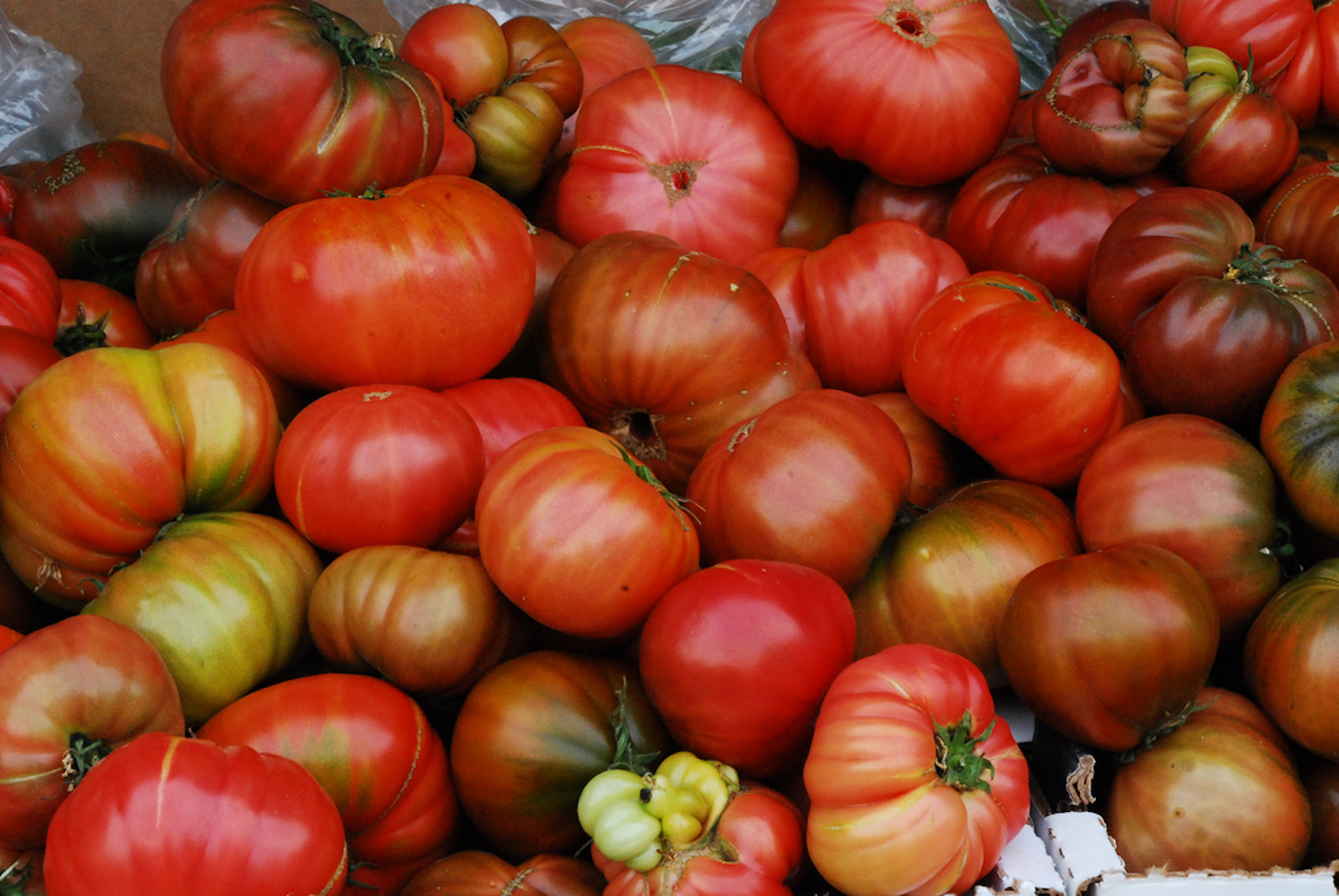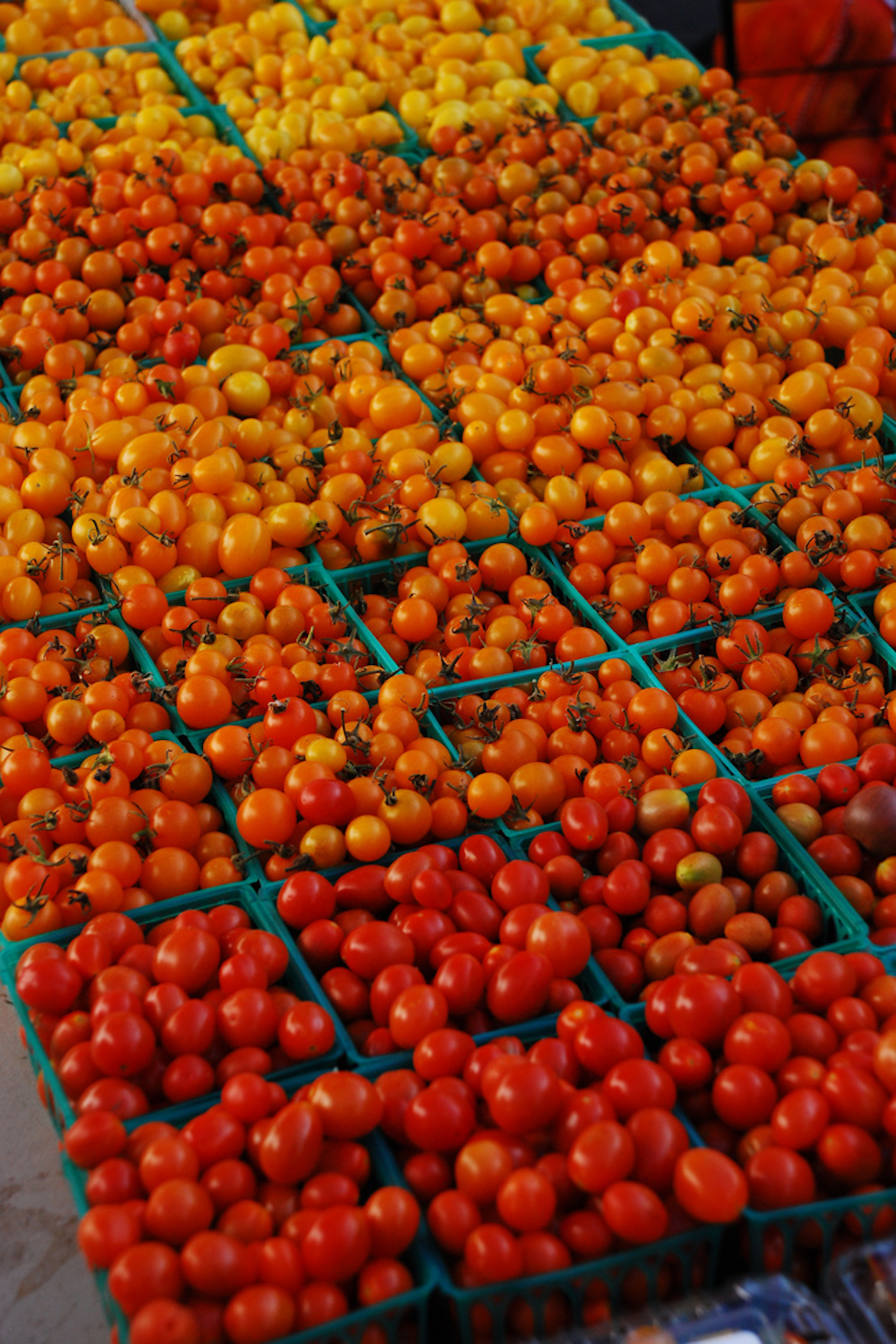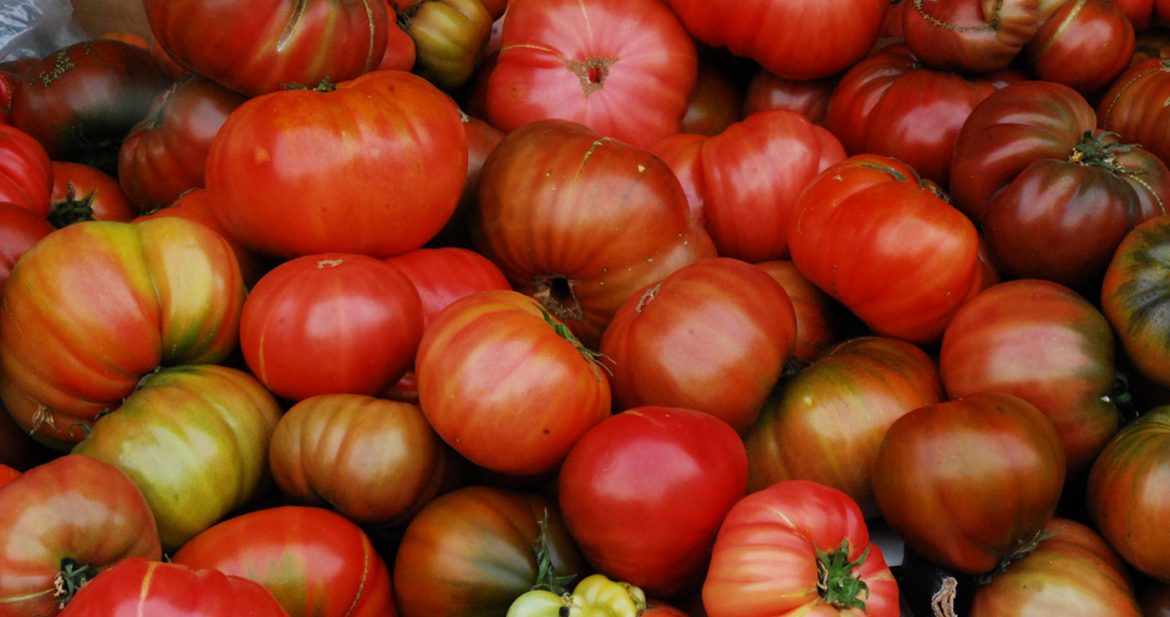Forget sugarplums – at this time of year it’s visions of big, juicy, vine-ripe tomatoes that dance in the gardener’s head. Tomatoes are the quintessential garden edible. The tomato is so culturally ubiquitous – so representative of summer itself – that people not in possession of gardening gloves, a shovel, or the slightest desire to grow anything at all still get that deluded, wistful garden look in their eye sometime in April and buy a half-gallon Better Boy at their local Home Depot.

Northwestern gardeners can ripen up some great little cherry and grape tomatoes – the kind that taste like tomato candy and never make it to the kitchen – but this just isn’t prime big ‘mater country. Most years the big full-sized beefsteak tomatoes just don’t yield tremendously well. Our nights are too cold, our soil never really warms up, the season is too short. We have every excuse in the book.And what is the tomato-growing experience for most of us in the Maritime Northwest? At the risk of cynicism, I don’t think it’s usually that great. The really good tomatoes – the big Brandywine taste-test winners that cause Eastern garden writers to wax rhapsodic for pages in describing the sweetness, the acid, the balance…well, those just don’t grow very well here.
And while tomatoes are scrappy plants, and very easy to grow, they are not necessarily easy to grow well. In my effort for The Tomato of The Seed Catalog, I have personally struggled with collapsed cages, wind-tattered cloches, late blight, powdery mildew, slugs (and slugs, and slugs, and slugs) and at least one case of blossom end rot.
The good news is, we don’t have much of a tomato hornworm problem in this area. See, things are looking up.

When I was a kid, I would go up to my Grandma and Grandpa’s place on Camano Island. They had a crappy, creaky little rambler filled with Hummel figurines on a waterfront, high-bluff double lot with a panoramic view of Puget Sound. Blessed with a temperate location to begin with, their home sat in the Olympic Rain Shadow and basked in south-west sun all day.So why do we gardeners keep questing after the perfect tomato? I think it’s a selective memory thing.
My Grandpa scoffed at crop rotation. He planted his tomatoes in the same spot every year: in front of a white painted, south-west facing cement wall beaten by sun for 12 or 14 hours a day at the hight of summer. The white reflected extra light to the tomatoes during the day, and the cement held in the day-time heat and radiated it back out to the plants at night. This is how my Grandpa managed to get gorgeous crops of big tomatoes nearly every year.
I remember picking a tomato at their place once, long ago. I can’t have been more than 8 or 9 years old. The tomato was the size of my head, and I held it with both hands. I sat cross-legged in the grass, facing the rest of the tomato plants and away from the house so Grandma wouldn’t catch me and my tomato-nicking ways. Juice dribbled down to my elbows as I ate that tomato. As a kid, I didn’t particularly care for tomatoes, but in my Grandpa’s garden, it was almost like I was eating a big, tangy peach.
Every year as I browse the catalogs and read the tantalizing descriptions of tomatoes, and every year in late February when I start my tomato seeds for the summer, the memory of my Grandpa’s tomatoes is somewhere in the back of my head.
I think these childhood memories are so singular and become such a part of us that they have the power to push out the more recent realities: the burden of bushels of green tomatoes we’ll never eat, the almost-perfectly-ripe Roma’s completely skeletonized by slugs, the squish and smell of rotten tomatoes under-boot as I tear out mold-strickened plants at the end of the season.
My brother-in-law calls tomatoes a Heartbreak Crop, and he’s right. Just when enough frustration has piled up that we are ready to swear off tomato growing entirely, a summer comes along that’s hot enough and long enough and the plants produce. The flavor is perfect; nothing compares. We fall in love all over again, only to be crushed the next summer when the bounty, inevitably, falls short. But success is always more sweet for being hard-won, and I think we Maritime Northwest gardeners appreciate our garden-ripe tomatoes all the more for the work it takes to get them.
Gardening is hope, winning out over experience. Never give up hope.
It’s time to start those tomato seeds. What tips, tricks and magic will you be employing to help ensure a bumper crop of tomatoes this year?
All images in this post are the work of photographer and LA Weekly author Felicia Friesema. They are used here with her kind permission.
3
Last year everyone here lamented on how horrible a year it was for tomatoes. August, which is generally our hottest month didn't make it over 78 deg and was foggy/overcast every single day until 3 or 4pm. Actually, we didn't get any heat last year until mid September and even then it was nuts. It would be 73 one day and the next it would be 103. It was only hot off and on for about a month. We pulled 340lbs of tomatoes from our garden last year – some weighed more than a pound each. What was our secret? We planted 24 plants. We just went all out and planted as much as we could. The smaller fruited 'maters of course did the best and upped the weight harvested.
Previous years we were always struck with blossom end rot. This time we buried a bunch of crushed egg shell with each plant and made sure to keep the soil moisture even.
I know you've thought of this, but maybe the answer for growing tomatoes in the Northwest is a hoop house? It's not the answer for slugs, but Eliot Coleman says that ducks control slugs best.
Chickens control slugs well too. I was told they wouldn't eat slugs, but my girls didn't read that book; they love slugs, and cutworms, and caterpillars.
I grow tomatoes, but the last two years I've wound up with basically a late blight. Not only don't they ripen, but they've gotten a bacterial disease from the wet and the ick.
One more try this year, then I officially give up. Ironically, I don't like tomatoes at all. I do need vast quantities to turn into salsa and sauce, thought.
Rachel-my inlaws live in central Cali and were keeping me abreast of the situation down there. Seems the entire west coast was unseasonably cool. They were worried for the commercial growers.
Bill, I usually grow 4-5 indet. in trained to single cordons in my small greenhouse and dets. in outside raised beds. I do have the best luck with the tomatoes in the small greenhouse. Keeping the fall rains off them makes a huge difference in a cool summer. One year I tried to get clever and hoop-house the outside tomato bed. PVC was asked to bend in remarkable ways, but I got a 5 or 6' tall cloche over the 18" raised bed. This kept the temperature up and seemed to be helping a lot until a really gusty day blew the whole thing to shreds. But I keep trying! Sadly, ducks are not allowed in our town. 🙁
Lisa, Ducks are forbidden, but hens were recently legalized. We are planning on 3 this spring or next depending on how together I can get it. I'm glad to hear they eat slugs too. I have plenty. I think so many of us are ready to swear off tomatoes that this summer will probably be a great tomato year. The tomatoes know how to keep us hooked. I, too, like them most as sauce and salsa. But a caprese salad with buffalo milk mozzarella makes me happy too.
I was planning on giving up on them this year, but then I discovered the grafted tomato plants and may give those a whirl…
I actually had some success with the basic roma tomato last year… until my beagle Betty discovered them. I couldn't figure out why they were all disappearing or dropping off the vine until I looked out the window and saw her sneak up to the plant and pluck one off with her mouth. I know tomatoes are bad for dogs but I couldn't stop laughing at how sneaky she thought she was.
The place we got our heirloom starts last year puts a fish head, bone meal, crushed eggs and some other stuff in a deep hole, covers it with some dirt, and then plants a tomato on top of all that (still buried 2/3rd the way up the stem.) They do all their plants that way.
We had a great crop of tomatoes last year without going to that trouble, but I'm curious about trying it. As much as I don't relish the thought of acquiring fish heads, I might plant at least a few of the tomatoes that way.
Saskia – that made me laugh so hard it triggered a coughing jag that had most of my coworkers pretty worried…
Some thoughts from The Homebrew Husband about life after growing up in California's tomato country: Confessions of a Tomato Hater
I'm growing 8 different varities in four Self Watering Containers. I do it every year and have the same problems as you, of course. Though I got more BER last year due to going 100% heirloom/OP. Hybrids have much better disease resistance.
Mine were started weeks ago and I've got several under lights, but germination has been bad.
I'm going to be putting together a greenhouse from scrap glass panels and lumber and I am hoping I just get A FEW. Or maybe enough to do some serious sauce making and canning. I guess we'll see what happens. But I know I need to keep the rain off them and increase the heat, so I'm trying to figure out a way to incorporate passive solar and heat retention in with it. Won't be easy to do, considering my backyard is about 90% shaded, but the greenhouse spot does get the most sun out of any spot in the yard. Which is to say, maybe half a day's worth… lol. Keeping my husband supplied with habanero peppers is going to be difficult around here…
I know this doesn’t help you, but we’re in the midwest and have no trouble growing tomatoes. Last year we planted 18 plants, I think, but in the end had about 40 of them because of all the volunteers from the compost we added to our beds. This year? We’re cutting back!
On the other hand, I have a lot more trouble with the brassicas you seem to grow so easily.
Being in NC, I am fortunate to be able to grow beautiful beefsteak heirloom tomatoes. Practically speaking, I’ve learned to not grow many. I don’t like refrigerating my tomatoes. My kids will eat cherry tomatoes and tomatoes cooked in anything; but they won’t eat a sliced tomato. The dilemma becomes eat the big beautiful tomato all at once now or wait until you are ready to eat it all at once. In the end my husband and I eat some, most are given away, and a few end up in compost. Now, I grow a couple of beefsteak plants for sport, but I grow many cherry and paste for our lifestyle.
I enjoy perusing and i also conceive this brilliant site- got some really utilitarian stuff with it!
.